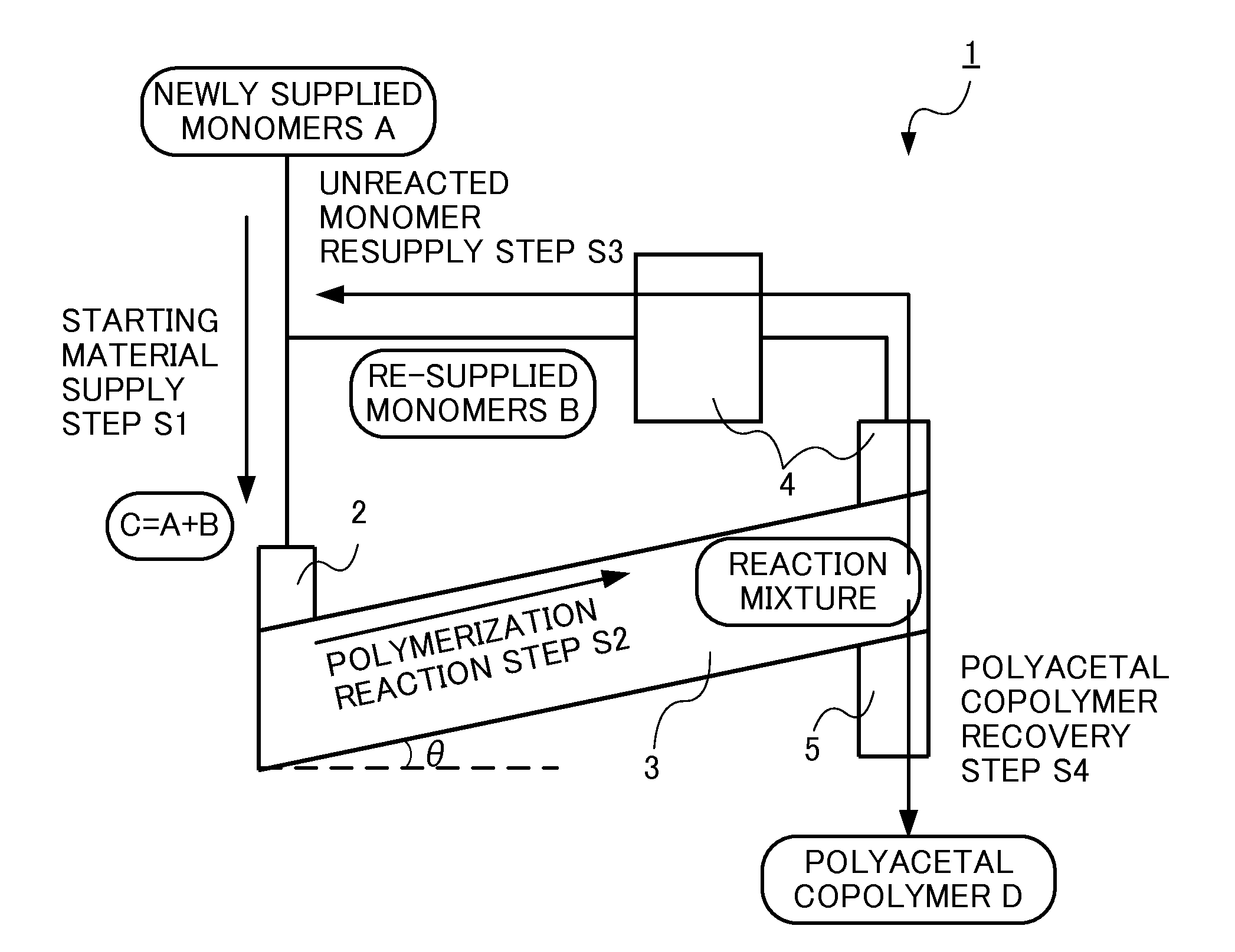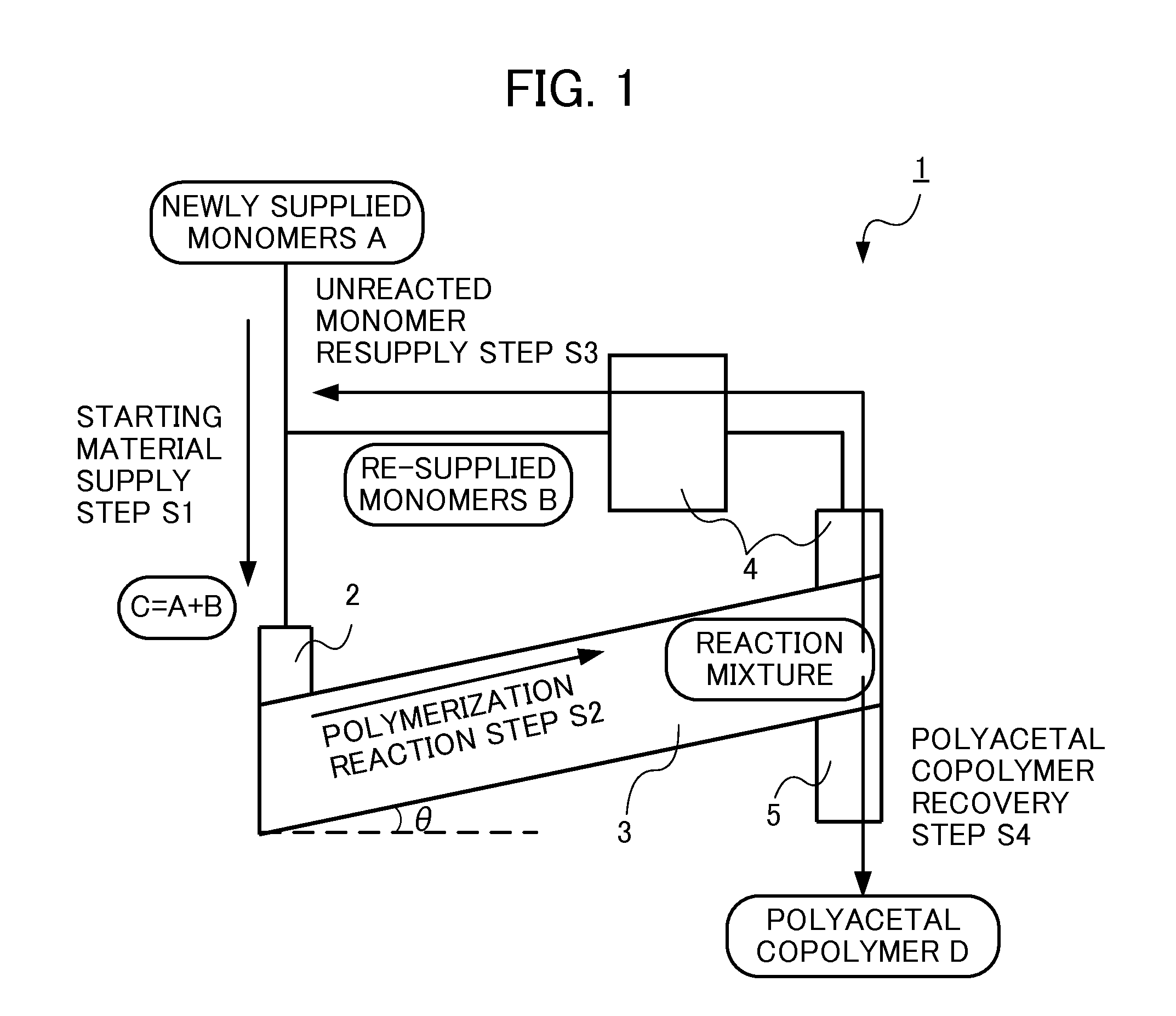Method for producing polyacetal copolymer
a polyacetal copolymer and copolymer technology, applied in the field of polyacetal copolymer production, can solve the problems of reducing molecular weight, reducing the polymer conversion ratio, and suddenly reducing the polymerization speed, and achieve the effect of simple process
- Summary
- Abstract
- Description
- Claims
- Application Information
AI Technical Summary
Benefits of technology
Problems solved by technology
Method used
Image
Examples
examples
[0068]Below, the present invention is specifically explained with reference to examples, but the present invention is not limited thereto.
TABLE 1ExampleComparative Example12345671234comonomerDOXODOXODOXODOXODOXODOXODOXPDOXODOXODOXODOXOpolymerization catalystHPAHPAHPAHPAIPAIPAIPAHPABF3BF3BF3polymerization catalyst amount with22224442202020respect to the total supplied monomerslope angle (°)12352550025
[0069]The abbreviations in Table 1 are as follows. (comonomer)
[0070]DOXO: 1,3-dioxolane
[0071]DOXP: 1,3-dioxepane
(polymerization catalyst)
[0072]HPA: phosphomolybdic acid (non-volatile protonic acid)
[0073]IPA: paratungstic acid (non-volatile protonic acid)
[0074]BF3: boron trifluoride (dibutyl ether complex) (well-known polymerization catalyst of the prior art)
PUM
| Property | Measurement | Unit |
|---|---|---|
| Angle | aaaaa | aaaaa |
| Particle diameter | aaaaa | aaaaa |
| Diameter | aaaaa | aaaaa |
Abstract
Description
Claims
Application Information
 Login to View More
Login to View More - R&D
- Intellectual Property
- Life Sciences
- Materials
- Tech Scout
- Unparalleled Data Quality
- Higher Quality Content
- 60% Fewer Hallucinations
Browse by: Latest US Patents, China's latest patents, Technical Efficacy Thesaurus, Application Domain, Technology Topic, Popular Technical Reports.
© 2025 PatSnap. All rights reserved.Legal|Privacy policy|Modern Slavery Act Transparency Statement|Sitemap|About US| Contact US: help@patsnap.com


